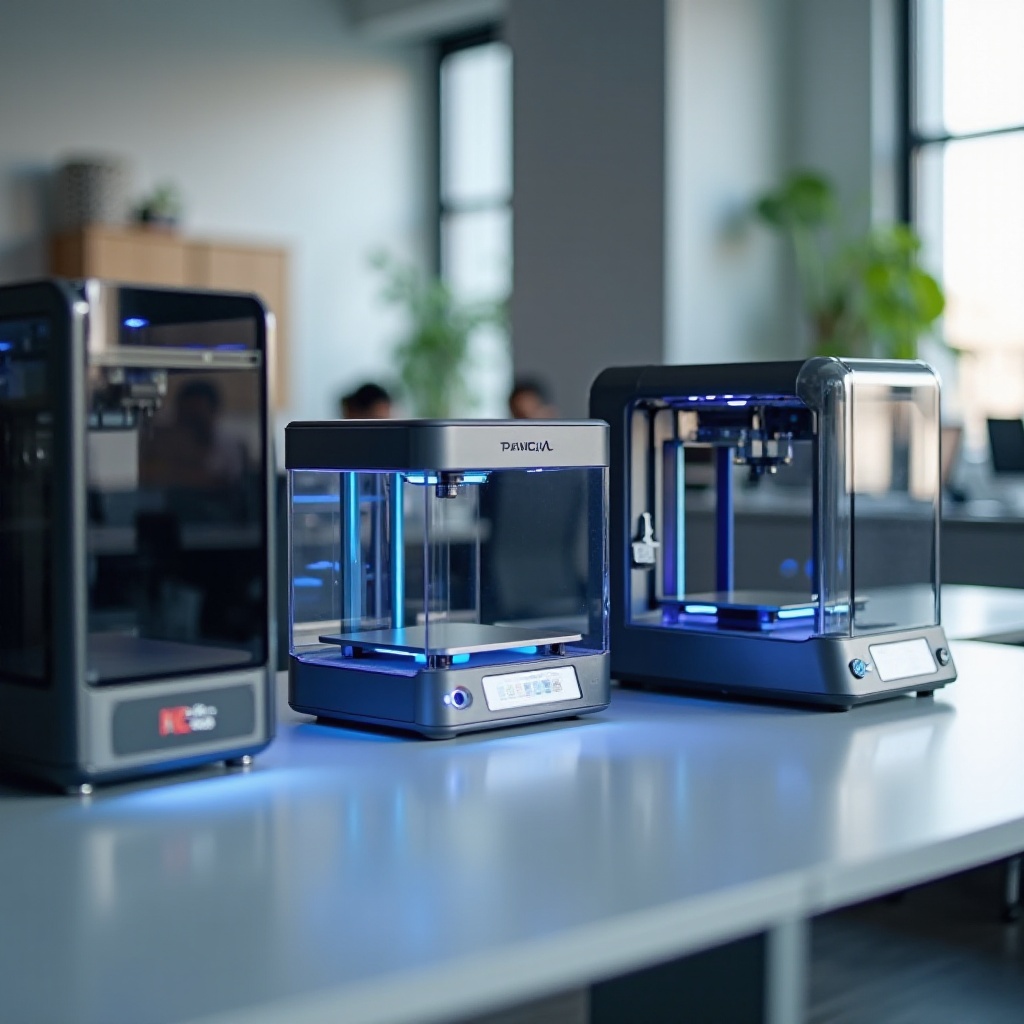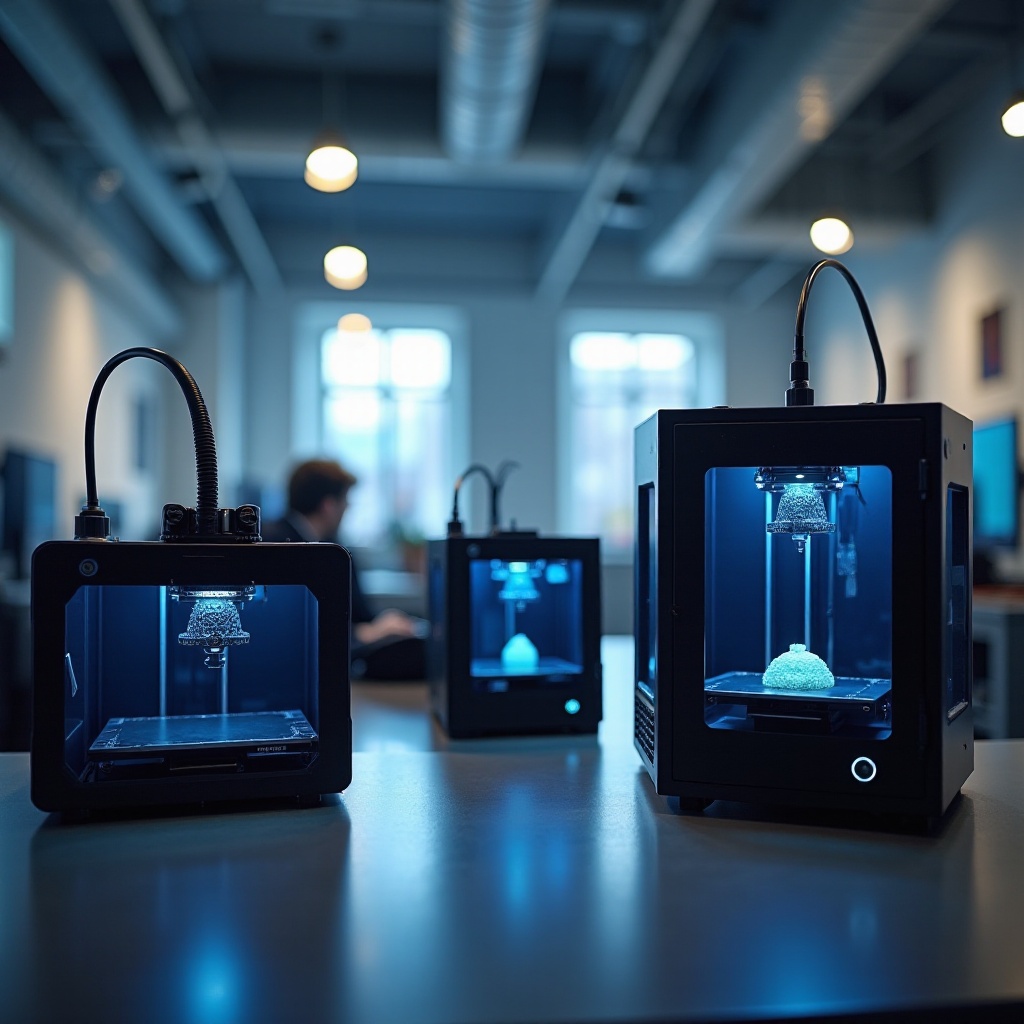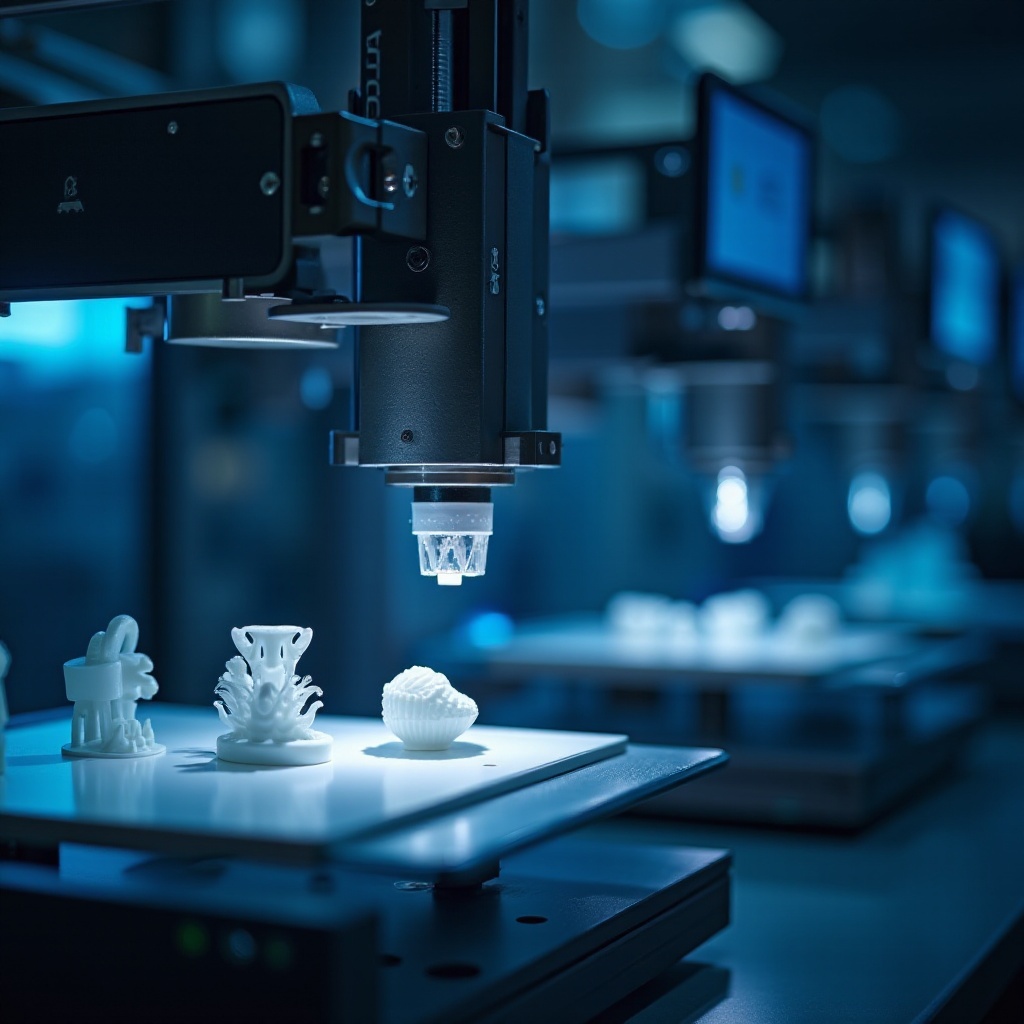Types of Resin Printers
Introduction
Resin printing has become a popular method in additive manufacturing for creating highly detailed parts. As technology has evolved, several types of resin printers have emerged, each offering unique benefits and catering to different needs. Understanding the specific features, advantages, and applications of each type can help you choose the right printer for your project.

Different Types of Resin Printers
The market offers several types of resin printers, each with its unique mechanisms and advantages. Here are the primary types:
Stereolithography (SLA) Printers
SLA printers use a laser to cure liquid resin layer by layer, creating highly detailed and intricate parts. They are ideal for applications that require precision and smooth surface finishes.
Digital Light Processing (DLP) Printers
DLP printers use a digital light projector to cure resin. They boast faster print speeds compared to SLA printers because they cure entire layers at once, making them suitable for time-sensitive projects.
Liquid Crystal Display (LCD) Printers
LCD printers employ an array of UV lights beneath an LCD screen to cure resin. They offer a good balance between cost and precision and have become popular owing to their affordability and versatility.
PolyJet Printers
PolyJet printers spray liquid resin onto a build platform while UV light cures the resin immediately. These printers are known for their ability to print in multiple materials and colors simultaneously, providing high detail and smooth surface finishes.
Comparing Resin Printer Types
Each type of resin printer has unique characteristics that differentiate them from one another. Here's a comparative analysis based on several factors:
Technical Specifications
SLA printers typically have a higher resolution due to their laser precision, while DLP printers focus on speed, curing entire layers with a projector. LCD printers balance resolution and cost, making them accessible for enthusiasts and professionals alike. PolyJet printers stand out for multi-material and color capabilities, offering high versatility.
To move to speed and efficiency, it is important to consider the different needs of a project. Speed and precision often vary by type.
Speed and Efficiency
If speed is your priority, DLP printers are generally faster, curing entire layers in one go. SLA printers are slower as they cure point-by-point, but the trade-off is exceptional detail. LCD printers offer decent speed and efficiency, making them suitable for various applications. PolyJet printers offer flexible efficiency but may require more maintenance.
Print Quality
When it comes to print quality, each type has its strengths. SLA printers lead in terms of print quality due to their high-resolution lasers. DLP printers follow closely, with excellent detail but sometimes less smooth surfaces. LCD printers offer good quality for their price range, catering well to hobbyists. PolyJet printers provide high-quality prints with the added benefit of multi-material use but at a higher cost.
Material Compatibility
Material compatibility is diverse across printer types. SLA and DLP printers primarily use photopolymer resins, with various options for specialized applications like dental and jewelry. LCD printers are versatile with most commercial resins. PolyJet printers can handle a variety of materials, including flexible and rigid resins, offering extensive applications in industrial design.
Pros and Cons of Each Type
Let's delve into the advantages and some common drawbacks of each resin printer type.
Advantages of SLA Printers
- High precision and detail
- Smooth surface finishes
- Robust material options
Advantages of DLP Printers
- Faster print speeds
- Efficient layer curing
- Good detail quality
Advantages of LCD Printers
- Affordable and cost-effective
- Balanced speed and quality
- User-friendly operation
Advantages of PolyJet Printers
- Multi-material and color printing
- High resolution and smooth finishes
- Versatile for different industries
Common Disadvantages
- DLP and PolyJet can be more expensive
- SLA printers may have slower print times
- All resin printers generally require more post-processing
- UV-sensitive resins need careful handling and storage
Before diving into the industry applications of these printers, it is important to note how they have revolutionized various sectors.

Industry Applications of Resin Printers
Resin printers have revolutionized various industries due to their precision and versatility. Here are some key applications:
Medical Field
Resin printers are used to produce customized medical implants, surgical guides, and anatomical models. Their ability to create intricate details makes them invaluable for personalized healthcare solutions.
Dental Industry
In the dental industry, resin printers are used to fabricate everything from dental molds to final dental products. Their precision ensures that dental devices fit perfectly, improving patient outcomes.
Engineering Prototypes
Engineers utilize resin printers for rapid prototyping, enabling the creation of highly detailed and accurate models. These prototypes help in visualizing and testing product designs before mass production.
Jewelry Design
Jewelers prefer resin printers for creating detailed and intricate designs. The precision of resin printing ensures that even the most delicate patterns are accurately replicated, making it ideal for custom jewelry creation.

Conclusion
Understanding the different types of resin printers is crucial for selecting the right tool for your specific needs. Whether you prioritize speed, precision, multi-material capabilities, or cost-effectiveness, there's a resin printer that fits your requirements. Resin printers continue to advance, opening new possibilities across various fields, from healthcare to engineering and design.
Frequently Asked Questions
What is the most cost-effective type of resin printer?
LCD printers are typically the most affordable option, providing a good balance between cost and quality.
Which resin printer type offers the highest print quality?
SLA printers offer the highest print quality due to their high resolution and laser precision, ideal for detailed and intricate parts.
Can I use the same resin material in different types of resin printers?
While some resins are compatible across different printer types, it is always recommended to check the resin's specifications to ensure compatibility with your specific printer model.



